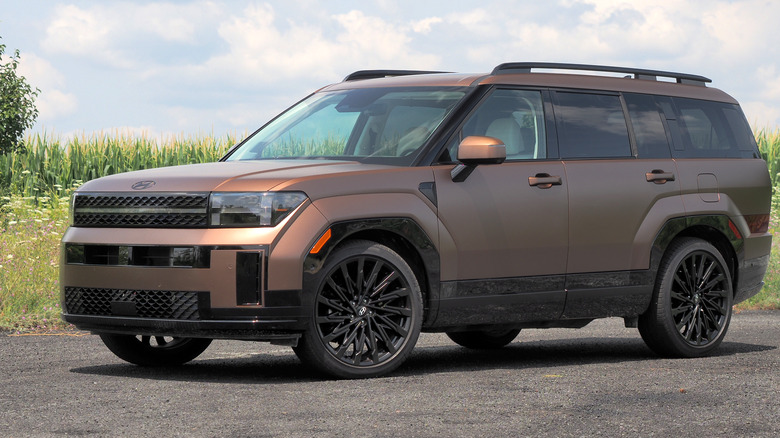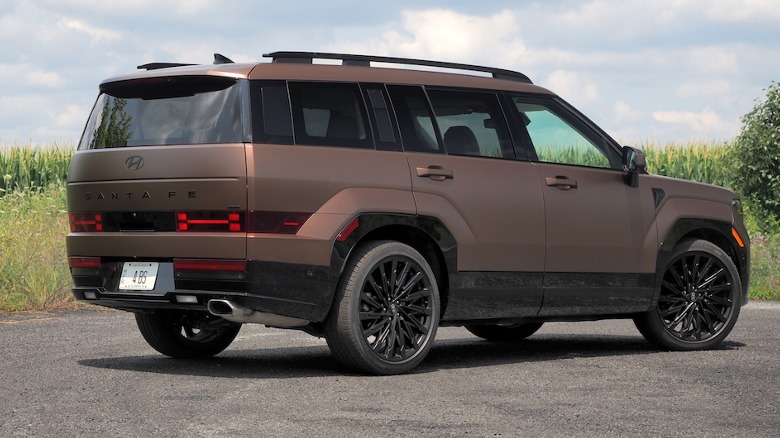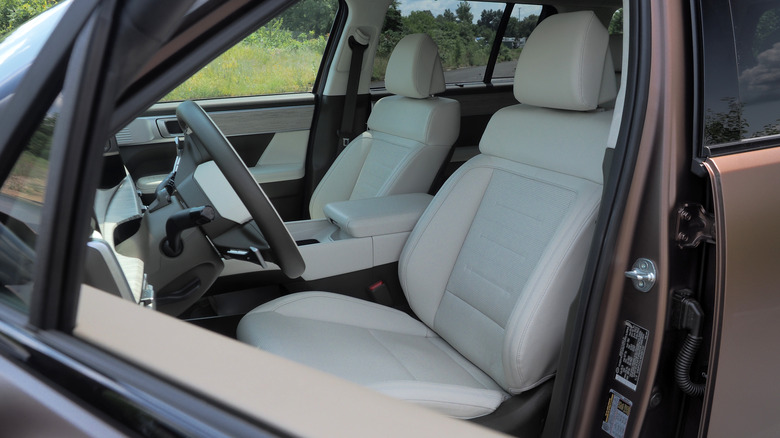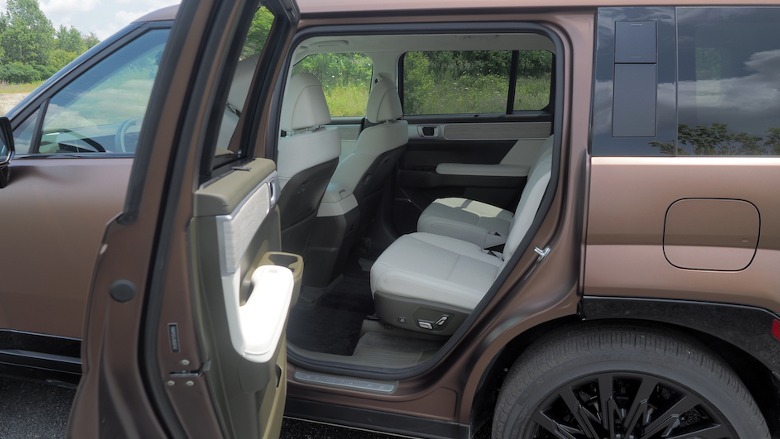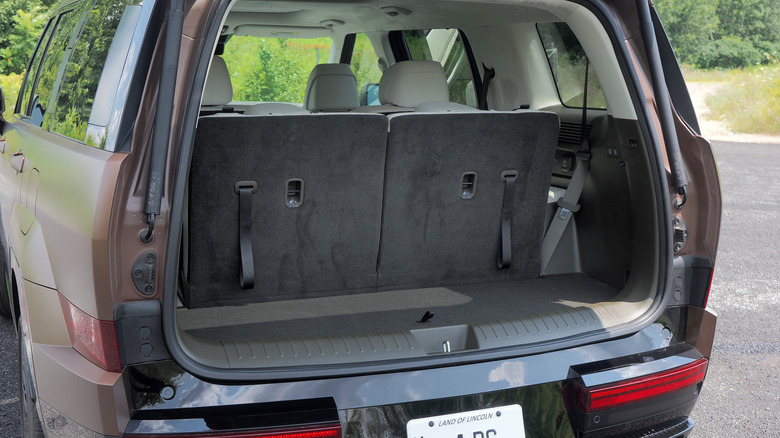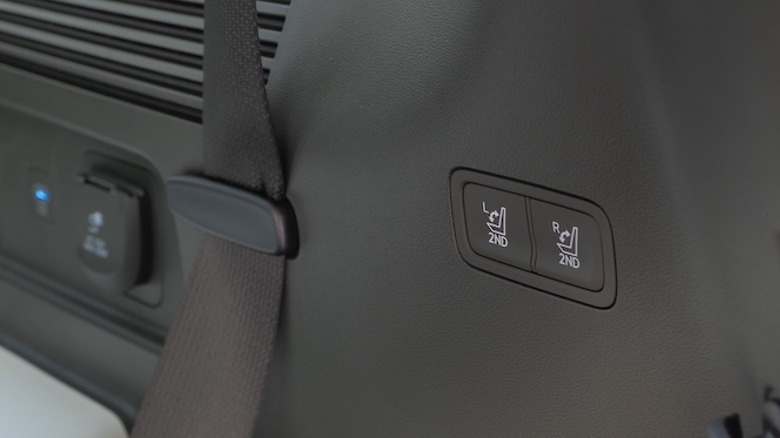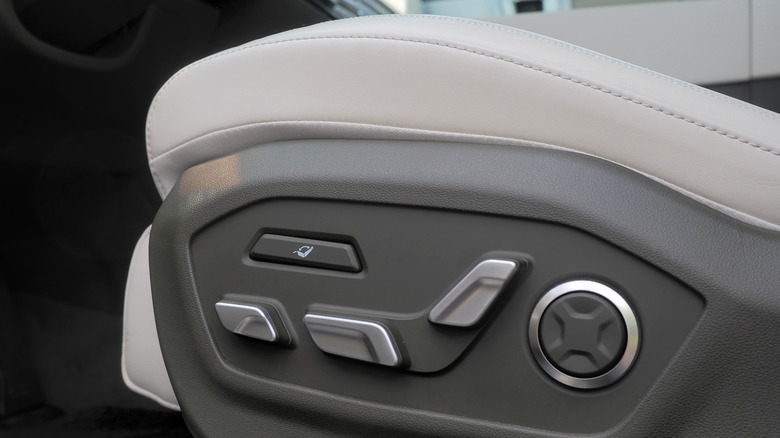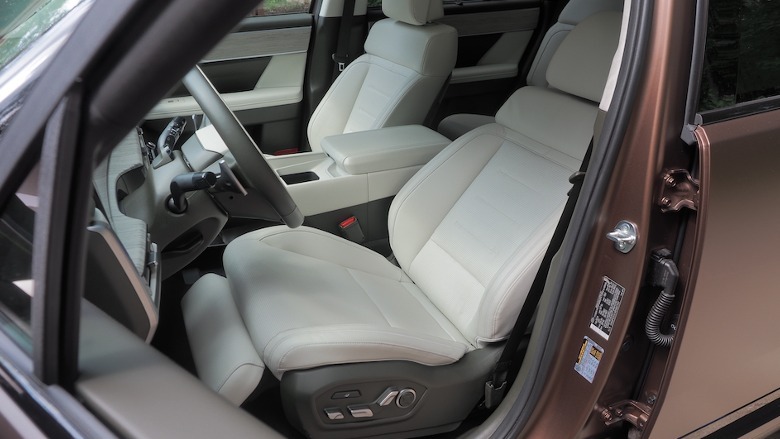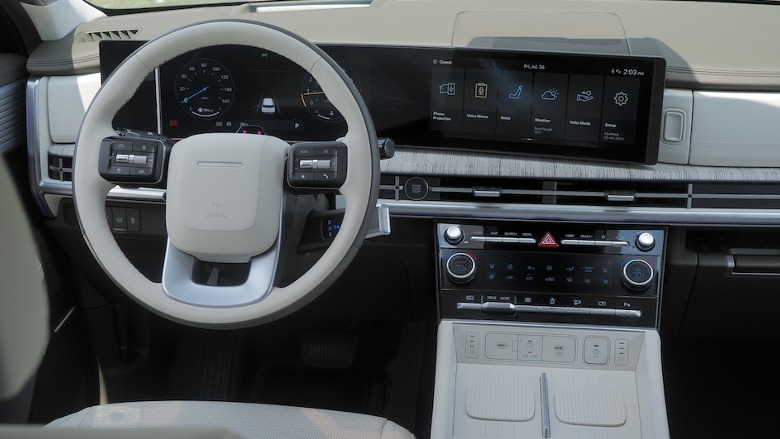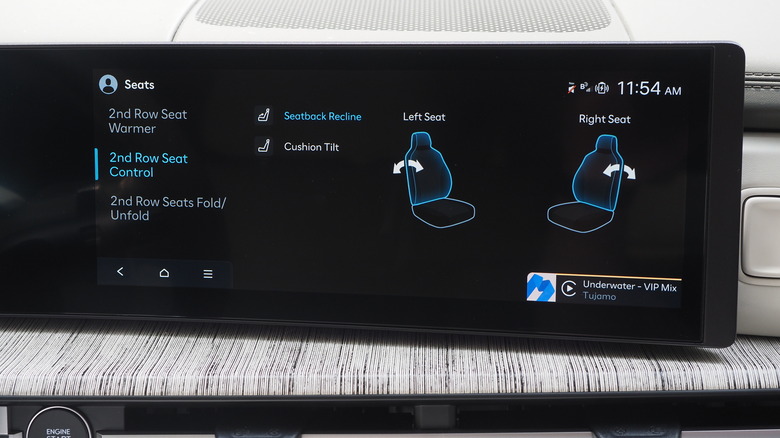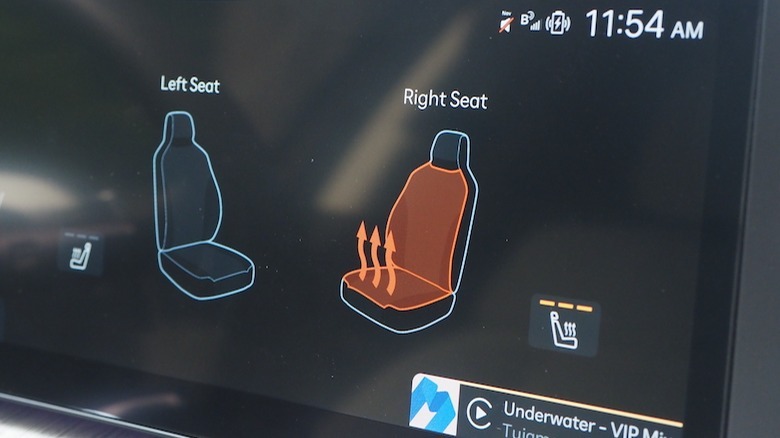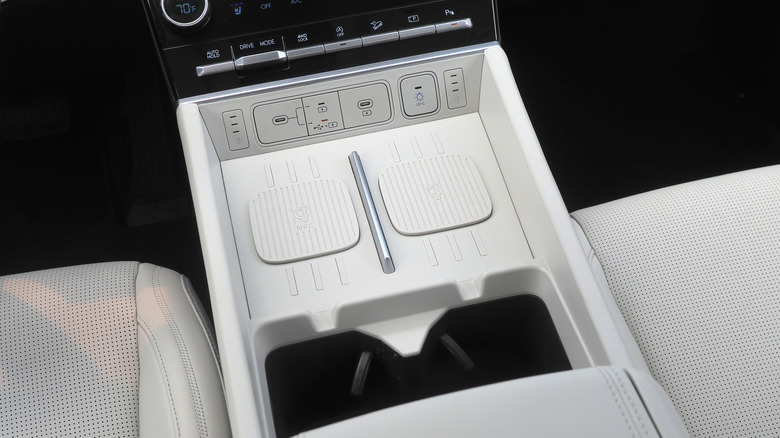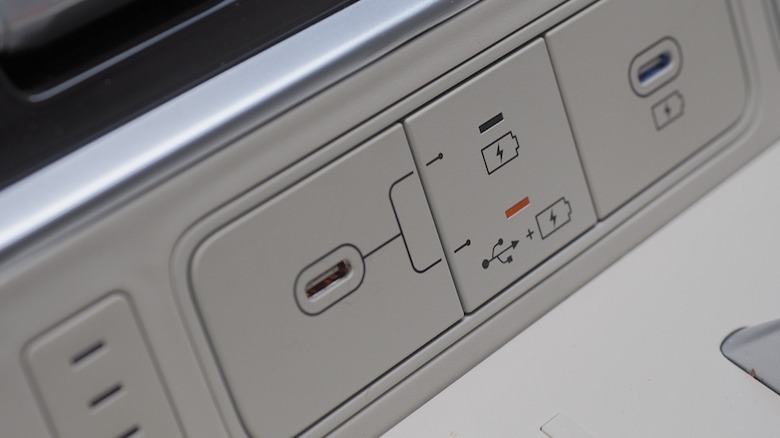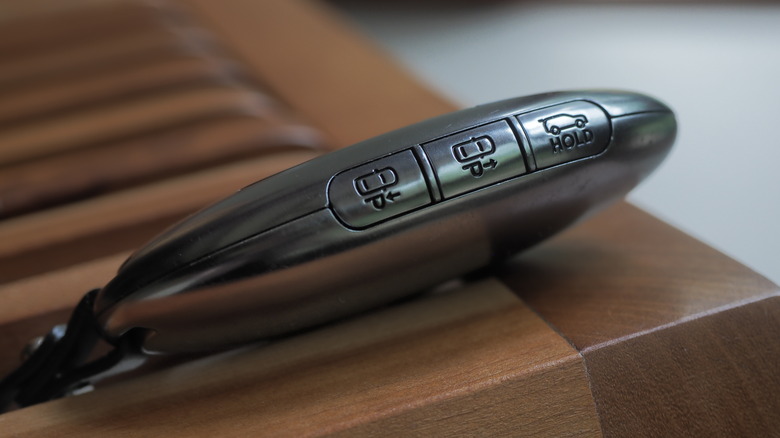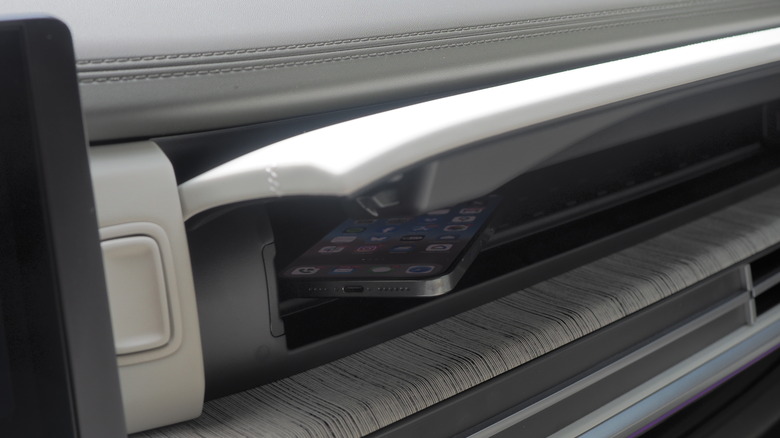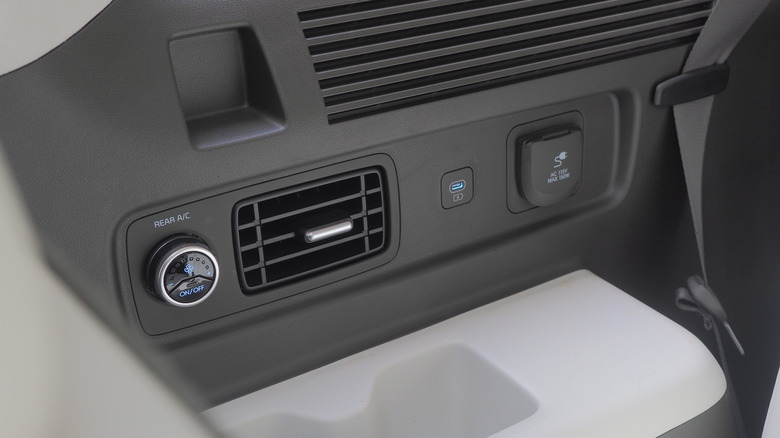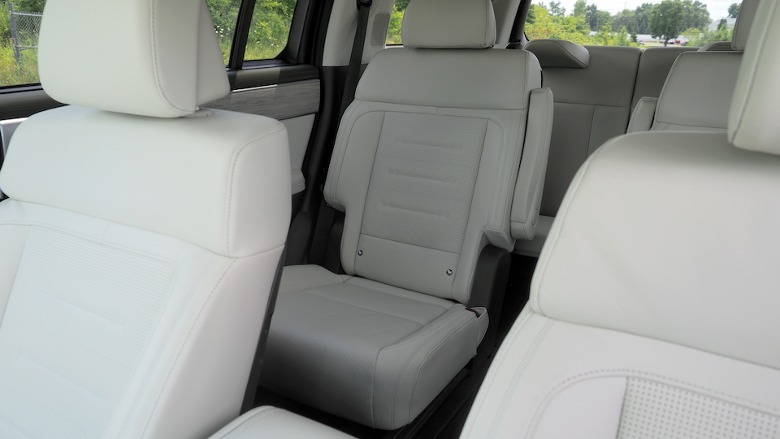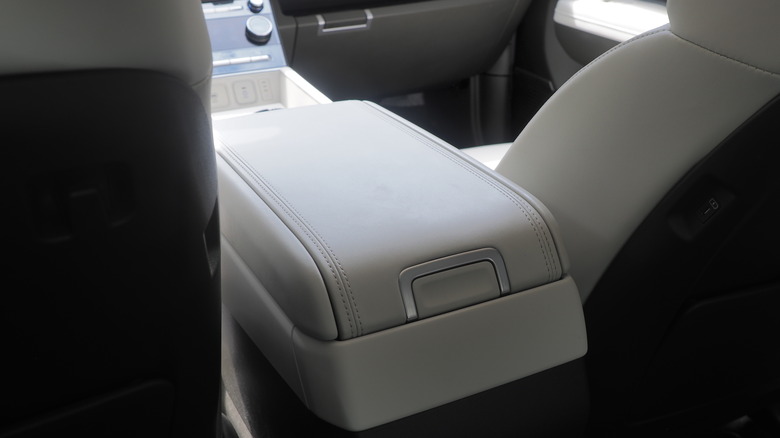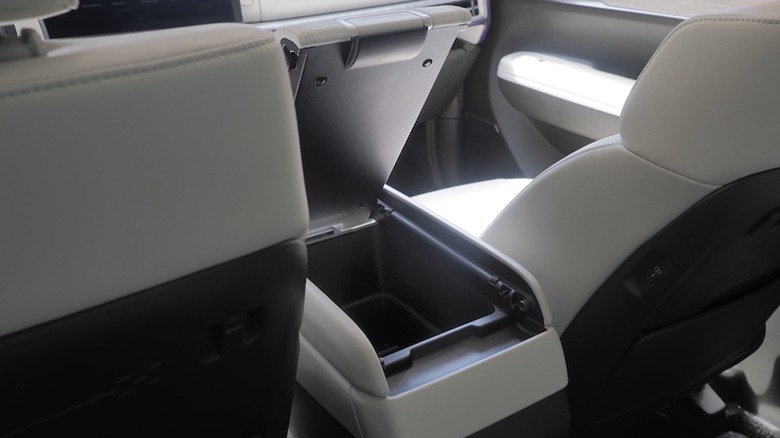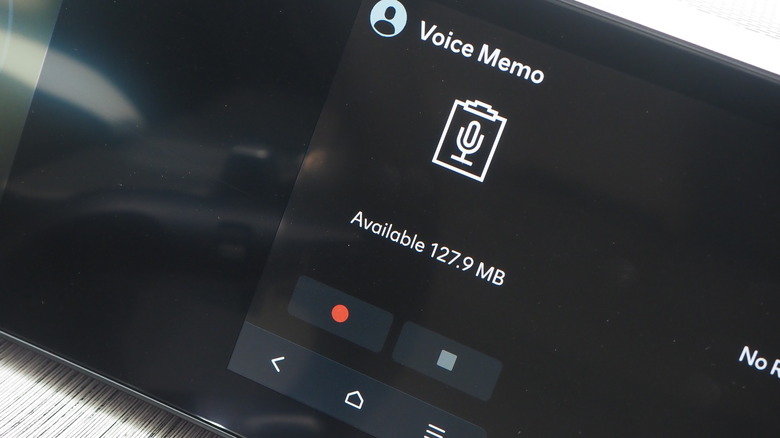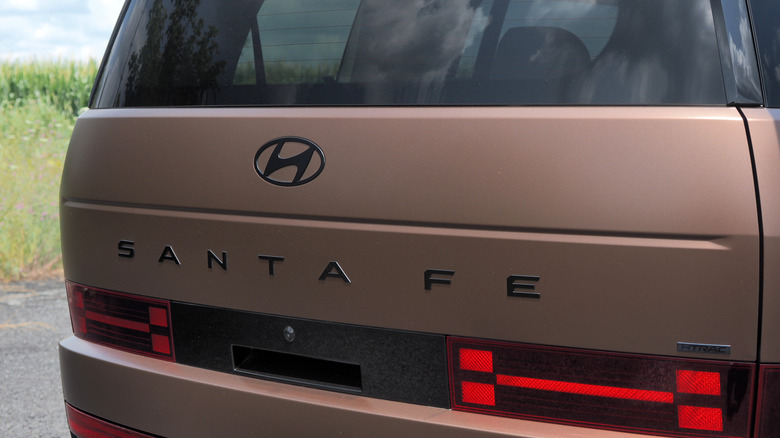2024 Hyundai Santa Fe Interior: Features, Technology & Layout
Hyundai's 2024 Santa Fe may have embraced a bold new design language with its exterior, but as any three-row SUV buyer knows, at the end of the day it's what's inside that really counts. The chunky family hauler is one of the automaker's largest models, with seating for up to seven in a cabin that — though there's a gas engine under the hood — borrows heavily from Hyundai's recent electric cars when it comes to aesthetics.
The result is a high-tech and user-friendly experience, whether you're playing at the sub-$35,000 starting point of the Santa Fe lineup, or aiming high with the Calligraphy trims approaching $50k with options. While not all of the niceties come as standard, the SUV's core layout generally disappoint. Certain options, meanwhile, are definitely worth paying for.
Some of these features we've seen before, on Hyundai, Kia, or Genesis vehicles like the all-electric EV9. Some are making their U.S. debut on the new Santa Fe. And some are just ideas that, while others in the auto industry may have them too, we'd like to see all vehicles adopt for one reason or another.
Cloth, fake-leather, or two types of hide
The non-hybrid Santa Fe comes in a choice of five trims, spanning the cheapest SE, through the SEL, XRT, and Limited, and topping out at the Calligraphy. All but the last trim come equipped with seven seats, in a 2-3-2 configuration. The Santa Fe Calligraphy swaps the split middle-row bench for a pair of individual captain's chairs.
While the SE uses stain-resistant cloth upholstery for its seating, the SEL and XRT switch to H-Tex faux-leather. You get real leather on the Limited, while the Calligraphy upgrades that to even nicer Nappa hide. Heated front seats are standard from SEL trim up; heated second row seats from Limited up. Only the Limited and Calligraphy trims enjoy ventilated front seats.
Unsurprisingly, things are snug in the child-scale third row. The mere 30-inches of legroom is the primary concern, though even getting into the rearmost seats can be a chore what with the cabin floor rising to accommodate the back axle and wheel wells. Second row space is better, with markedly more room for legs and taller occupants.
Not the biggest trunk of the segment
As with most less-than-full-sized SUVs, there's a choice to be made when it comes to just how much you can transport. With all three rows of seats up, there's a snug 14.6 cu-ft of cargo space in the Santa Fe's trunk. A Ford Explorer, in contrast, offers 16.3 cu-ft, while a Honda Pilot pushes that to 18.6 cu-ft.
Drop the third row in the Santa Fe — which is done manually, using release cords accessible from the trunk — and you get a more reasonable 40.5 cu-ft. Lowering the second row — with power release buttons standard across all trims — expands cargo space to 79.6 cu-ft.
That's slightly behind the Explorer and Pilot, but not by much. All Santa Fe trims get a power tailgate, too, with hands-free opening. If interior space isn't sufficient, SEL trim and above get roof rails as standard.
A recliner for the driver
For a while, during the pandemic, it seemed like every automaker was working on a "third space" concept car. A private bubble, held apart from home or work, where the weary could recharge. Sadly, autonomous vehicles with cabins like mid-century conversation pits don't look to be on the cards any time soon, but a button on the 2024 Santa Fe's driver's seat can make it a nicer place to wait.
Press it, and the seat automatically slides back, reclines, and an extra section folds out for more leg support. It's the perfect way to hang out while you're waiting for kids to get out of school, to take a personal call in the office parking lot, or even just to listen to the SUV's surprisingly good audio system.
Recliner-style seats aren't new in the auto world, but usually they're the preserve of the second row. Hyundai's decision to put one up front is a good reminder that, while catering to a multitude of uses might be the preserve of the three-row SUV, one thing that's consistent is someone being in the driver's seat.
So many useful buttons
Doing useful things from afar seems like the Santa Fe's secret weapon. As well as remote parking, and third-row HVAC control, there are not-uncommon buttons in the trunk to fold and unfold the rearmost seats. That makes it easier to expand the 14.6 cu-ft trunk to 40.5 cu-ft as a two-row SUV.
From the infotainment touchscreen, though, there's far-less-usual control over the flagship-spec Calligraphy's standard second row captain's chairs. From there, it's possible to control recline and cushion tilt for the two seats, along with fold and unfold them to unlock the maximum 79.6 cu-ft of cargo space. It's even possible to control the seat warming temperature from the touchscreen.
Power for all your devices
The Santa Fe's cabin is well stocked with cubbies and storage, but it's in the broad front center armrest where Hyundai shows its thinking ahead to the smartphone age. The SEL, XRT, and Limited all both have a Qi wireless charger there, meaning recharging for smartphones that support the standard. However, the Calligraphy trim gets a second wireless charging pad alongside it, meaning two phones can be topped up simultaneously.
The other good news — and something which makes the wireless charging support all the more useful — is that Hyundai's infotainment system finally supports wireless Apple CarPlay and Android Auto. Previously, many of the automaker's models (including the last-gen Santa Fe) forced you to plug in a USB cable if you wanted to take advantage of smartphone projection.
That's not to say the Santa Fe lacks wired charging options. There are at least four USB charge ports (two in the front and two in the rear), with Limited and Calligraphy trims adding a further pair for the third row. All trims get two 12V outlets — one in the front row, and one in the cargo area — and XRT trim up get a 115V AC outlet.
Remote parking from the Santa Fe's key fob
I'll level with you, usually Hyundai's Remote Smart Parking Assist feels a bit like a gimmick. Certainly, there's something undeniably cool about being able to move a car forward or backward while you're stood outside of it, using buttons on the key fob. Whether there's a legitimate application has always been my lingering doubt, though.
Loading up three rows-worth of people into the Santa Fe in a tight parking garage could change my mind, though. The ability to glide the big SUV in and out of spots with only marginal clearance either side probably also sounds a lot more appealing if you're wrestling with a child seat, too. Don't worry: the system will slam on the brakes if you've inadvertently left a stroller right in front of or behind the car.
A UV sanitizing glovebox
Santa Fe, New Mexico, is known for its sunshine, but it's UV (ultraviolet) light in particular that Hyundai's SUV of the same name is taking unexpected advantage of. The Santa Fe has a second glove compartment, positioned higher on the dashboard than the usual bin where you'll typically find a service manual and insurance card. The upper compartment is smaller and not so deep, but press a "UV-C" button in the center console and it's flooded with UV light.
Specifically, its UV-C light of the 200-280 nm wavelength, which Hyundai says "can remove up to 99.9% of germs from the exposed surface of an object." Germaphobes rejoice — previous studies have found UV-C of certain wavelengths can kill COVID-19, among other things — though there are some caveats to be considered, too. For a start, the UV-C glovebox is only offered on the Limited and Calligraphy trims.
It's also not a 360-degree light source, and so Hyundai warns that the effectiveness of the treatment "varies depending on the size and shape of the object being disinfected and the object's degree of exposure to UV-C light." In fact, it recommends repositioning your phone, keys, or whatever else you're putting in there, and repeating the cleaning cycle to improve the overall results.
Making the third row more welcoming
Getting relegated to the very back of a three-row SUV is not typically something to celebrate, with all but the most monstrous of the breed tending to trade legroom for a trunk that's at least vaguely useful. The Santa Fe's rearmost seating isn't the most capacious — though children probably won't complain — but Hyundai does at least sweeten the deal with controls not typically present in rival models.
Alongside the power outlet and USB-C ports, themselves always welcome too, there's a dedicated fan speed controller for the third row air vents. No, you can't adjust the temperature from there — or, indeed, change the second row climate from those seats; that's all handled by the dashboard switchgear — but being able to adjust how much air is coming through makes a big difference to individual comfort. And, if you're worried about mischievous kids messing around, there's the ability to overrule the third-row controls from the front.
So many cubbies
You can't really fault Hyundai's commitment to cubbies. The 2024 Santa Fe is positively bristling with spots to stow all the essentials a modern family simply must bring along, not to mention plentiful cupholders across all three of the seating rows. Ditching a traditional transmission shifter allowed for niceties like the dual wireless charging pads in the front, after all, something rare even in high-end luxury vehicles.
What stands out, though, is one particular button, and how practical it is. As you'd expect, you can lift up the front center armrest to access a deep bin (with a removable divider), but a second button at the rear of that lid allows it to hinge in the opposite direction, and be accessed from the second row.
Now, armrest storage that'll open from either left or right isn't particularly unusual, but this first/second row duality makes a nice change. Who knows, it might even cut down on "can you pass me the..." requests.
Recording those pearls of driving wisdom
If your usual routine in a new vehicle is to get in, pair your smartphone, and rely on Apple CarPlay or Android Auto instead of the car's own infotainment, you might be missing out on a few clever tricks. Hyundai's homegrown UI certainly isn't offensive to look at or navigate, and finally supports wireless phone projection across the board, but there's at least one good reason to stick with the Santa Fe's own software.
Voice Memo isn't unique to the Santa Fe, but it's one of those little-appreciated features more people should probably know about. If you've ever had inspiration strike while at the wheel, only to forget all about it by the time you can pull over, being able to record a voice recording using the Hyundai's microphone could be a godsend.
They can be saved to the SUV's internal storage or to a plugged-in USB drive. Indeed, the only thing which would be more handy is if the Santa Fe used its Bluelink Connected Car Service and the baked-in cellular modem to automatically sync those recordings so you could access them remotely.
Refined on the road, too
What doesn't change across the trim walk is the Santa Fe's engine. That's a 2.5-liter inline-four turbo with 277 horsepower and 311 lb-ft of torque. Front-wheel drive is standard on SE, SEL, Limited, and Calligraphy trims, while all-wheel drive is an option. The Santa Fe XRT comes with Hyundai's all-wheel drive as standard, and a higher towing rating should the cabin space prove insufficient. That's nudged up to 4,500 pounds on the XRT, from 3,500 pounds on all the other trims, assuming you're hooking up a trailer with brakes.
